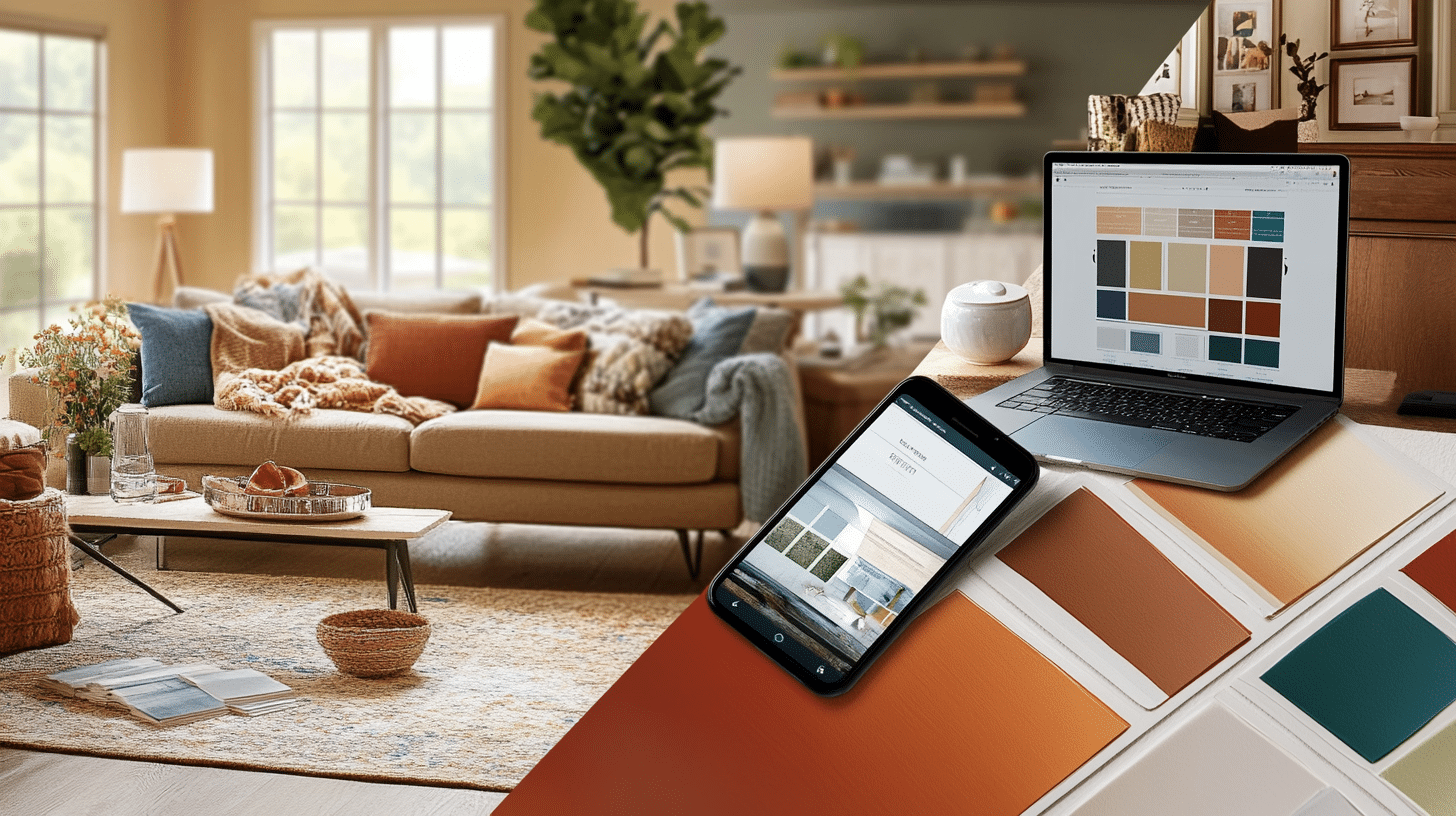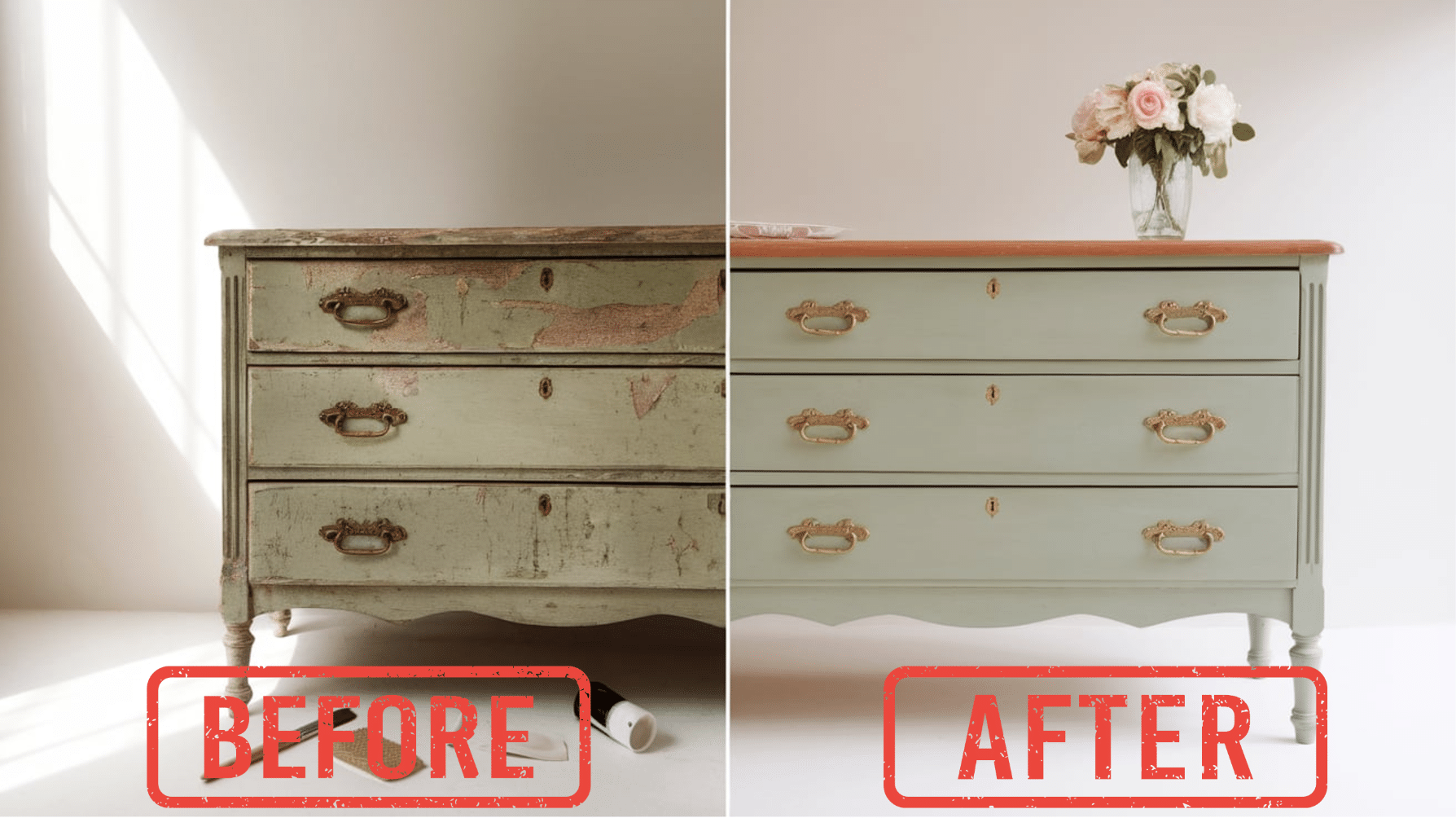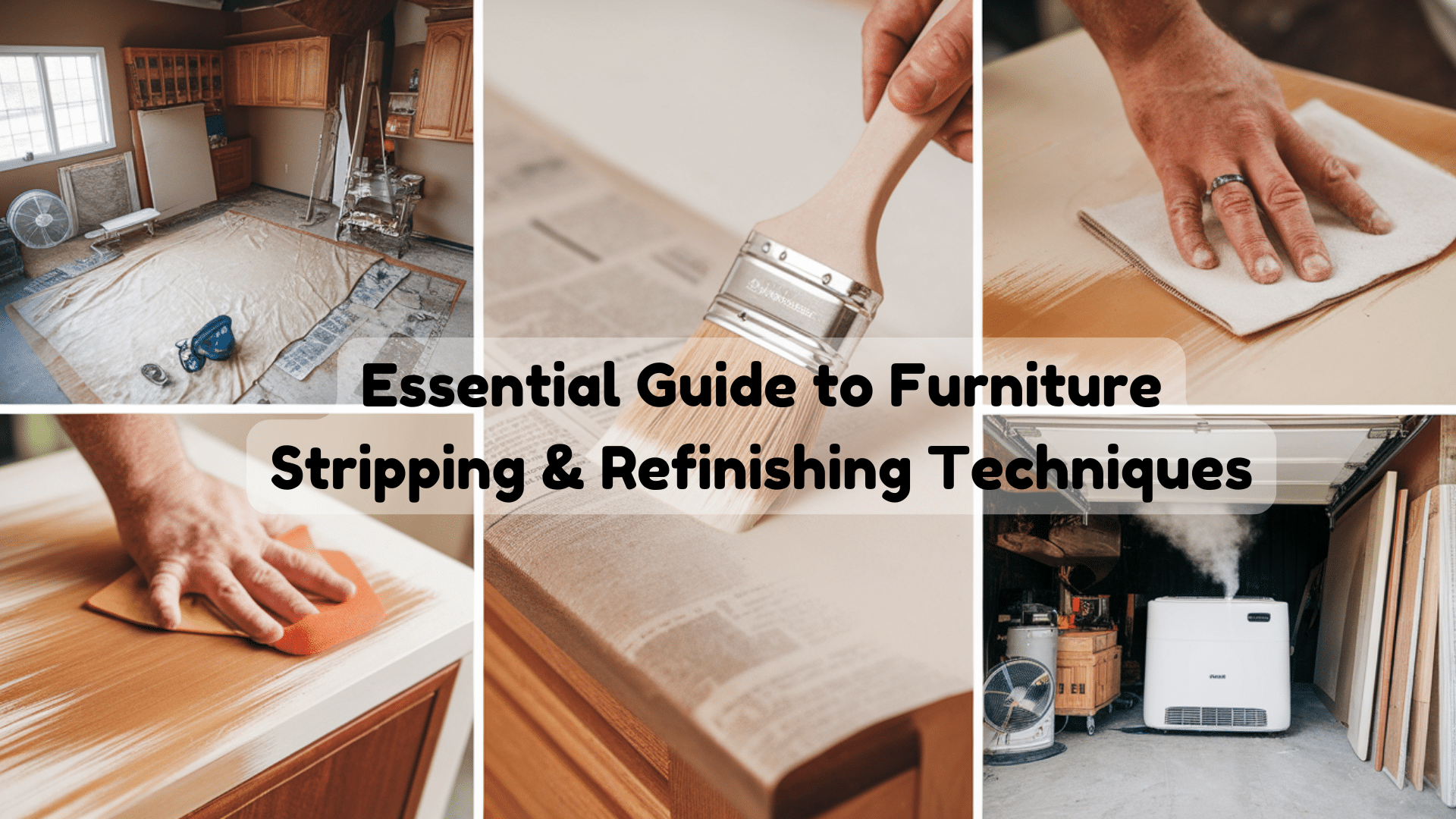How to Get Home Depot to Match Benjamin Moore Paint?
After sharing my experience with using Hale Navy by Benjamin Moore in my last blog, I got a ton of questions from readers.
The most common one? “Can I get Benjamin Moore colors matched at Home Depot?”
I get it, Benjamin Moore is known for its gorgeous, premium paints, but not everyone has a Benjamin Moore store nearby or wants to pay the premium price.
As someone who’s been through the trial-and-error process of color matching, I know how important it is to get the exact shade you want, whether it’s for a bold accent wall or a quick furniture refresh.
Yes, Home Depot can match Benjamin Moore’s paint colors.
While they can’t give you the exact Benjamin Moore product, they can mix their own paint to match that perfect shade you’re after.
In this blog, I’ll answer the big question, explore the pros and cons of matching Benjamin Moore colors at Home Depot, and share my tips for getting the best results.
Can Home Depot Match Benjamin Moore Paint Colors?
Yes, Home Depot can match Benjamin Moore’s paint colors, but there’s more to the story than a simple yes or no. While their color-matching technology is impressive, it’s important to understand that what you’re getting isn’t exactly the same as Benjamin Moore’s paint.
It’s a close approximation using Home Depot’s own paint bases and colorants.
From my experience with matching Hale Navy, I discovered that while Home Depot created a remarkably similar color, there were subtle differences that a discerning eye might notice.
However, for many homeowners (myself included), the match was more than satisfactory for my needs, especially considering the potential cost savings.
Understanding Paint Matching
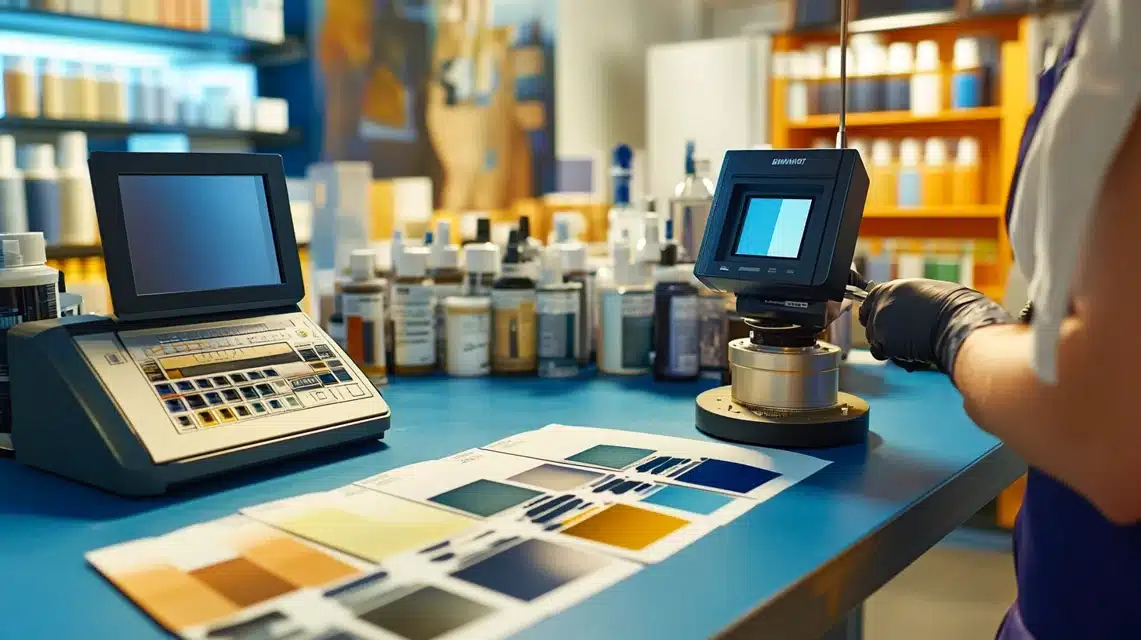
Ever fallen in love with a Benjamin Moore paint color but wondered if you could get it matched at Home Depot? You’re not alone.
Paint matching has come a long way from the days of eyeballing colors and hoping for the best.
Today, it’s a fascinating blend of art and science that can help homeowners like us achieve the perfect color match, even across different paint brands.
1. What Is Paint Matching?
Think of paint matching as being similar to a chef recreating a recipe from a restaurant dish.
Just as the chef needs to identify the right ingredients and proportions, paint matching involves analyzing an original color to recreate it in a different paint brand.
In my case, I wanted to recreate Benjamin Moore’s rich, sophisticated colors using Home Depot’s more accessible paint lines.
Having previously worked with Benjamin Moore’s Hale Navy (HC-154), I can tell you firsthand that their colors have a depth and richness that’s truly special.
But what makes paint matching possible is that all colors, regardless of brand, are ultimately created from the same basic components. It’s just a matter of getting the formula right.
2. How Paint Matching Works?
The science behind paint matching at Home Depot is pretty impressive.
They use a device called a spectrophotometer – think of it as a color detective that can analyze and break down any color into its exact components.
When I brought in my Benjamin Moore color sample, the store associate placed it under this high tech scanner.
The spectrophotometer reads the color and feeds the information into a computer system that translates it into a precise formula of tints and bases.
It’s like having a translation dictionary that converts “Benjamin Moore language” into “Home Depot language.”
The system analyzes:
- The exact color wavelengths
- The color’s undertones
- The depth and intensity of the shade
From my experience with Hale Navy, I learned that while Home Depot’s technology is impressive, it’s always wise to test the matched paint on a small area first. Colors can look slightly different depending on your home’s lighting and the paint’s base formula.
I’ll be honest, while Home Depot can create a very close match to Benjamin Moore’s colors, it might not be 100% identical.
The slight variations usually come down to differences in the proprietary bases and colorants each brand uses.
However, for many homeowners, including myself, the match is often close enough to be practical, especially when you consider the potential cost savings.
How Home Depot Matches Paint?
The process at Home Depot is both fascinating and straightforward. When I brought in my Benjamin Moore color sample, here’s what happened:
First, the store associate used their spectrophotometer – a sophisticated color-reading device that looks like a small scanner. They placed my sample under this device, which analyzed the exact color composition.
What amazed me was how quickly the machine could break down the color into its basic components.
The computer then translated this color analysis into a formula using Home Depot’s paint bases and colorants.
It’s like having a recipe converted from gourmet ingredients to everyday cooking items – the end result might be slightly different, but it can still be delicious.
Factors Affecting Accuracy

Through my paint-matching journey, I’ve learned that several factors can influence how close the match will be:
- Paint Bases: Benjamin Moore and Home Depot use different proprietary paint bases. In my case with Hale Navy, I noticed that the Home Depot version had a slightly different depth to it. It was still beautiful but not identical. This is because each manufacturer has their unique formula for paint bases that affects how colors appear.
- Sheen Variations: When I matched my paint, I discovered that sheen can significantly impact how the color appears. The same color in eggshell versus satin can look noticeably different, even within the same brand. I found it crucial to match not just the color but also the sheen level of my original Benjamin Moore paint.
- Lighting Conditions: Here’s something I learned the hard way – colors can look dramatically different under various lighting conditions. What looked like a perfect match under Home Depot’s fluorescent lights appeared slightly different in my home’s natural lighting. That’s why I always recommend testing the matched paint on a small wall area first and observing it at different times of the day.
Through my home renovation projects, I’ve found that Home Depot’s paint-matching service can be a valuable option, especially for budget-conscious homeowners.
While the matches might not be 100% identical to Benjamin Moore colors, they often come close enough to satisfy most needs.
The key is understanding these limitations and making an informed decision based on your specific requirements and expectations.
Having used both original Benjamin Moore paints and Home Depot matches in different rooms, I can say that success often depends on your attention to detail during the matching process and your willingness to test the color before committing to a full room.
Pro Tips for Best Results:
- Always get a sample mixed first and test it on your wall
- View the dried sample in different lighting conditions
- Bring a larger sample when possible for better accuracy
- Consider buying extra paint to ensure consistent color for touch-ups
Remember: While Home Depot’s paint-matching technology is impressive, if you’re looking for an exact match, and color consistency is crucial to your project, buying the original Benjamin Moore paint might be your best bet.
However, if you’re working with a budget or prefer Home Depot’s paint brands, their color-matching service can create a very close alternative that works for most situations.
Tips for Getting the Best Match
1. Bring a Sample

One of the most important lessons I learned during my paint-matching journey was the critical importance of bringing the right sample. When I first tried to match my beloved Hale Navy, I initially made the mistake of just bringing in a photo on my phone, which was a big mistake.
The store associate quickly explained why this wouldn’t work, and I’m so glad they did.
The best samples to bring are:
- An actual paint chip from Benjamin Moore
- A clean, freshly painted piece of drywall (about 6×6 inches)
- A painted item from your space (like a switch plate cover)
In my case, I had kept the original Benjamin Moore paint chip of Hale Navy from my previous home project, which proved invaluable. The larger the sample, the better the match will be.
I found that paint chips work well, but if you can bring in a larger painted sample, that’s even better. The spectrophotometer can get a more accurate reading from a larger surface area.
2. Test in Your Space
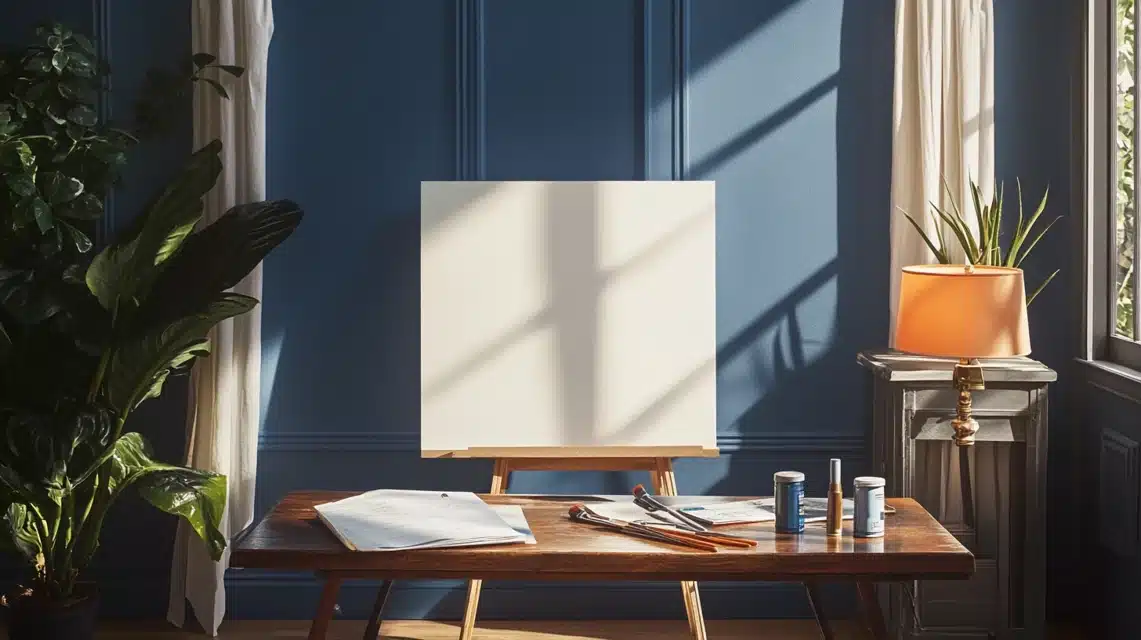
After getting my Hale Navy matched at Home Depot, I was tempted to dive right in and paint the entire room. However, remembering my previous painting projects.
I decided to test it first and I’m so glad I did!
I recommend this testing process that worked well for me:
- Buy a sample quart of the matched paint
- Paint two coats on a large piece of white poster board
- Move the board around different areas of your room
- Check the color during different times of day
- Compare it to your original Benjamin Moore sample in the same lighting
When I did this with my matched Hale Navy, I noticed subtle differences in how the color appeared in my north-facing room compared to my previous south-facing dining room. This testing phase allowed me to make slight adjustments to the formula before committing to several gallons of paint.
3. Understand Limitations

Being realistic about paint matching has been key to my satisfaction with the results. Through my experience with both Benjamin Moore originals and Home Depot matches, I’ve learned to expect and accept certain limitations.
First, understand that paint bases are different. When Home Depot matched my Hale Navy, the color was very close, but the way it absorbed and reflected light was slightly different from the original Benjamin Moore version.
This isn’t a flaw in the matching process, it’s simply because different manufacturers use different paint bases and ingredients.
Here’s what I’ve learned to expect:
- Colors might appear slightly different under various lighting conditions
- The depth and richness might vary slightly from the original
- Touch-ups might be more noticeable than with the original paint
- Certain complex or very deep colors might be harder to match perfectly
In my case, while the matched Hale Navy wasn’t an exact duplicate of my original Benjamin Moore paint, it was more than satisfactory for my needs. The key was adjusting my expectations and understanding that “very close” might be good enough, especially considering the cost savings.
What made the biggest difference in my experience was communicating clearly with the paint department staff about my expectations and concerns.
They were usually very helpful in explaining what they could and couldn’t achieve with their matching technology and often had useful suggestions for getting the best possible results.
Comparing Home Depot’s Paint Brands to Benjamin Moore
Having used Benjamin Moore’s Hale Navy in my previous home and now exploring Home Depot’s paint options for my new space, I’ve gained valuable insights into how these different brands compare.
Let me share my firsthand experience with both premium and more budget-friendly options.
1. Similar Color Options

When I first walked into Home Depot looking to match my beloved Benjamin Moore colors, I was pleasantly surprised by the extensive color ranges available across their paint lines. Each brand offers its own unique take on designer colors:
Behr, Home Depot’s flagship paint brand, offers an impressive selection that often comes close to matching Benjamin Moore’s sophisticated palette. During my color-matching journey, I discovered that Behr’s Premium Plus Ultra line actually had several colors very similar to Benjamin Moore’s popular shades.
The depth of their color catalog made it easier to find alternatives when exact matches weren’t possible.
Glidden, another Home Depot staple, provides a more budget-friendly option with a surprisingly robust color selection. While working on my new home, I found their color range to be particularly good at matching Benjamin Moore’s lighter and medium tones.
However, when it came to matching deep, complex colors like Hale Navy, I noticed some subtle differences in depth and undertones.
PPG’s presence at Home Depot adds another layer of options. Their color technology particularly impressed me when matching some of Benjamin Moore’s more unique shades.
The paint specialist explained that PPG’s color-matching capabilities are among the most sophisticated in the industry, which made sense given my experience with their matches.
2. Differences in Quality

After using both Benjamin Moore and Home Depot paints extensively, I’ve noticed several key differences in performance:
Coverage:
- Benjamin Moore: My experience with Hale Navy showed exceptional coverage, typically requiring just two coats, even for deep colors. The paint went on smoothly and provided excellent hide, even over lighter colors.
- Home Depot Brands: With Behr Premium Plus Ultra, I found the coverage to be quite good, though it sometimes requires an extra coat for full opacity.
Glidden and basic PPG lines often needed additional coats, especially with darker colors.
Durability:
- Benjamin Moore: The durability of my original Hale Navy walls was impressive – after years, the finish remained consistent, and the walls were easy to clean without color fade.
- Home Depot Options: Behr’s premium lines have proven surprisingly durable in my high-traffic areas.
However, I noticed that their basic lines and some Glidden products showed wear more quickly, particularly in areas that needed frequent cleaning.
Finish Quality:
- Benjamin Moore: The finish of my Hale Navy room had a notably rich, almost luminous quality that caught many visitors’ attention. The paint had a smooth, even appearance that really showcased the color’s depth.
- Home Depot Alternatives: While Behr’s premium lines provide a nice finish, I noticed subtle differences in how the paint settled and dried. The finish was good but lacked some of the richness I’d grown accustomed to with Benjamin Moore.
The more budget-friendly options sometimes showed slight roller marks and had a less-even appearance.
Price Considerations: During my new home’s painting project, I found that Home Depot’s paint options offered significant savings:
- Benjamin Moore paints often run $50-75+ per gallon
- Behr Premium Plus Ultra typically costs $35-45 per gallon
- Glidden and basic PPG lines run $25-35 per gallon
My experience has shown that while Home Depot’s paints might not perfectly replicate the premium quality of Benjamin Moore, their top lines (especially Behr Premium Plus Ultra) offer a compelling quality-to-price ratio.
For many of my rooms, the slight difference in quality was a worthwhile trade-off, given the cost savings, particularly when painting larger spaces.
Alternatives to Paint Matching at Home Depot
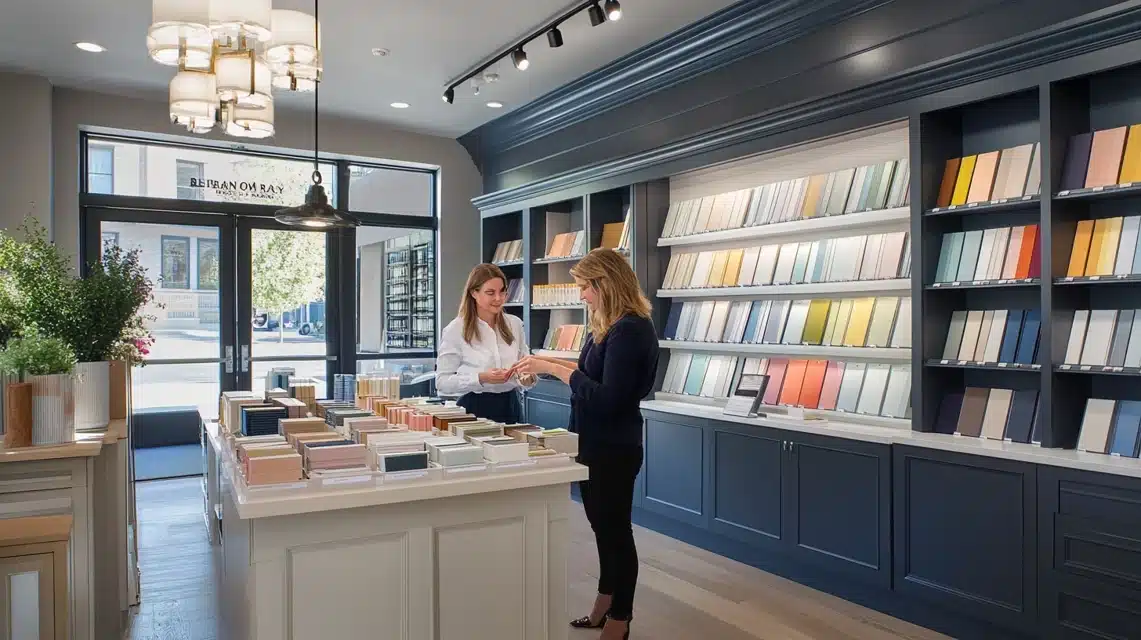
After my experience with matching Benjamin Moore’s Hale Navy at Home Depot, I also explored other options for getting the exact colors I wanted.
Let me share what I discovered about alternatives that might work better for your specific situation.
1. Using Benjamin Moore Retailers
While Home Depot’s matching service worked well for most of my rooms, I visited a Benjamin Moore retailer for my primary bedroom.
In this space, I wanted that signature Benjamin Moore finish I remembered from my Hale Navy dining room.
What I discovered at the Benjamin Moore store surprised me
First, the expertise level was noticeably different. The staff at my local Benjamin Moore retailer lived and breathed their products.
When I mentioned my previous experience with Hale Navy, they immediately engaged in a detailed discussion about undertones, lighting considerations, and complementary colors that would work in my new space.
The benefits I found at Benjamin Moore retailers included:
- Access to their complete color collection, including colors that are challenging to match
- Ability to purchase actual Benjamin Moore base paints and colorants
- Expert color consultation services (many retailers offer this free of charge)
- Precise color matching to other Benjamin Moore colors
- Access to their latest color trends and designer collections
The store’s color consultant even helped me create a whole-home color scheme based on my love of Hale Navy, suggesting coordinating colors I hadn’t considered.
This level of service helped justify the higher price point of the paint.
2. Third-Party Color Match Services
During my paint selection process, I also discovered several modern alternatives to traditional in-store color matching. These tools became particularly useful when I was trying to coordinate colors across different rooms and brands.
Digital Color Matching Tools: Through my research, I found several helpful resources:
- Paint manufacturer apps that let you visualize colors in your space
- Online color-matching tools that can find equivalents across different brands
- Smartphone apps that can scan and identify colors in your environment
My experience with these tools was mixed but enlightening. While the Benjamin Moore color visualization app helped me preview colors in my space, I found that digital representations weren’t always accurate enough for final decision-making. However, these tools were invaluable for initial planning and narrowing down options.
Professional Color Consultation: One option I hadn’t initially considered was hiring an independent color consultant. After struggling with some color decisions, I learned that many designers offer color consultation services that include:
- Professional color matching across multiple brands
- Custom color palettes for your entire home
- Lighting analysis for accurate color selection
- Recommendations based on your home’s architecture and style
While exploring these alternatives, I discovered that the best approach often combines multiple resources. For my most important rooms, like the master bedroom and living area, we opted for genuine Benjamin Moore paint from an authorized retailer.
For other spaces, we used a combination of Home Depot matches and digital tools to find the right colors within my budget.
The key lesson from my experience is that paint matching doesn’t have to be an either/or decision. You can strategically use different sources and services based on each room’s importance, visibility, and budget considerations.
For instance, while we used matched paint in my guest rooms, we invested in authentic Benjamin Moore paint for my open-concept living areas, where color consistency was most crucial.
Conclusion
If you’ve fallen in love with a Benjamin Moore color, like I did with Hale Navy in my last blog, you might wonder if you can recreate that magic using Home Depot’s services.
The answer is yes, but with a few things to keep in mind. While Home Depot’s color-matching technology is pretty good, subtle differences in bases and finishes mean the match might not be perfect.
That said, with a little preparation, like bringing a sample and testing the color in your space.
You can often get a result you’ll love without the premium price tag.
If precision is a must, it’s worth visiting a Benjamin Moore store, but for most projects, Home Depot can be a great option.
Have you tried color matching before? I’d love to hear your experiences or answer any questions—drop them in the comments below!
Let’s make your next paint project a success.
Frequently Asked Questions
How Much Does It Cost to Color Match at Home Depot?
The color matching service itself is free at Home Depot. You only pay for the paint you purchase.
This meant significant savings compared to Benjamin Moore’s prices, especially when painting multiple rooms.
While Benjamin Moore paint might cost $50-75+ per gallon, I found comparable colors in Behr Premium Plus Ultra for $35-45 per gallon.
How Long Does the Paint Matching Process Take at Home Depot?
From my experience, the actual color-matching process takes about 5-10 minutes once you’re with an associate.
However, I recommend allowing extra time if you’re visiting during peak hours (weekends or evenings).
When I matched my Hale Navy, the whole process, including getting the paint mixed, took about 20-25 minutes.
What’s the Best Paint Brand at Home Depot that Matches Benjamin Moore Colors?
In my experience, Behr Premium Plus Ultra provides the closest matches, especially for complex colors like Hale Navy.
The higher-quality base paint helps achieve a more accurate color match and provides better coverage compared to budget lines.
Can Home Depot Match Discontinue Benjamin Moore Colors?
Yes, as long as you have a sample of the color. When trying to match a discontinued Benjamin Moore gray from my previous home, I brought in a painted piece of drywall, and they were able to create an excellent match.
Will Home Depot Match the Exact Sheen of My Benjamin Moore Paint?
They can match the color in any sheen they offer, but I’ve found that sheen can vary between brands.
For example, a Benjamin Moore eggshell might look slightly different from a Home Depot eggshell finish.
When matching my Hale Navy, I needed to adjust the sheen level slightly to get the look I wanted.

